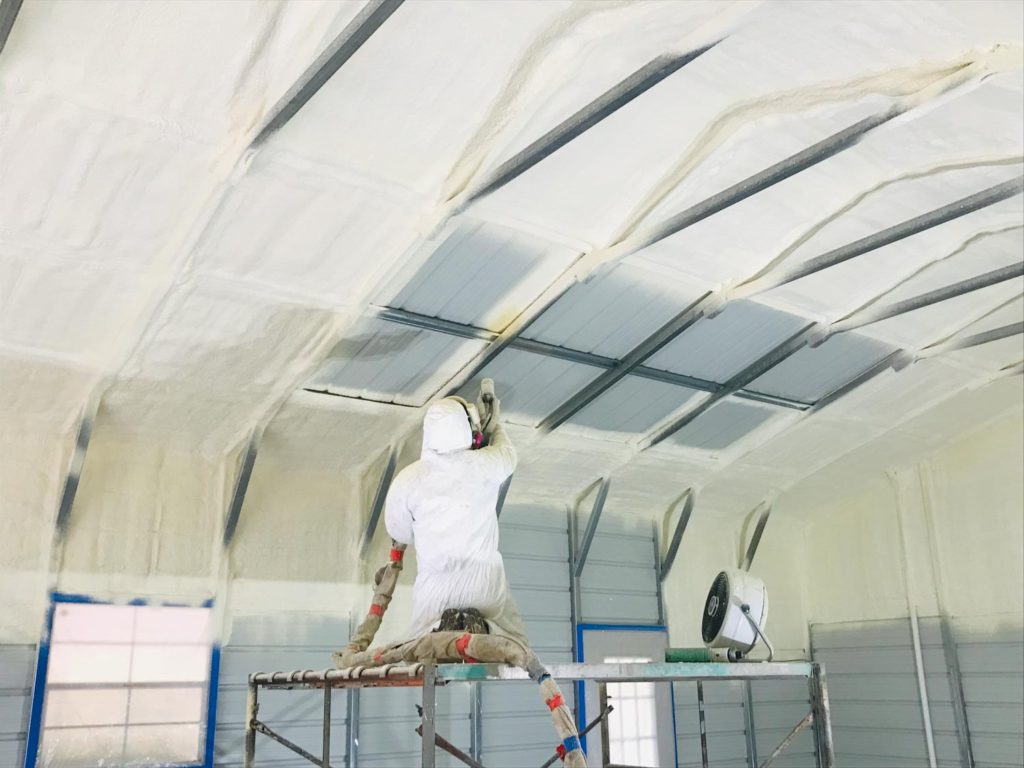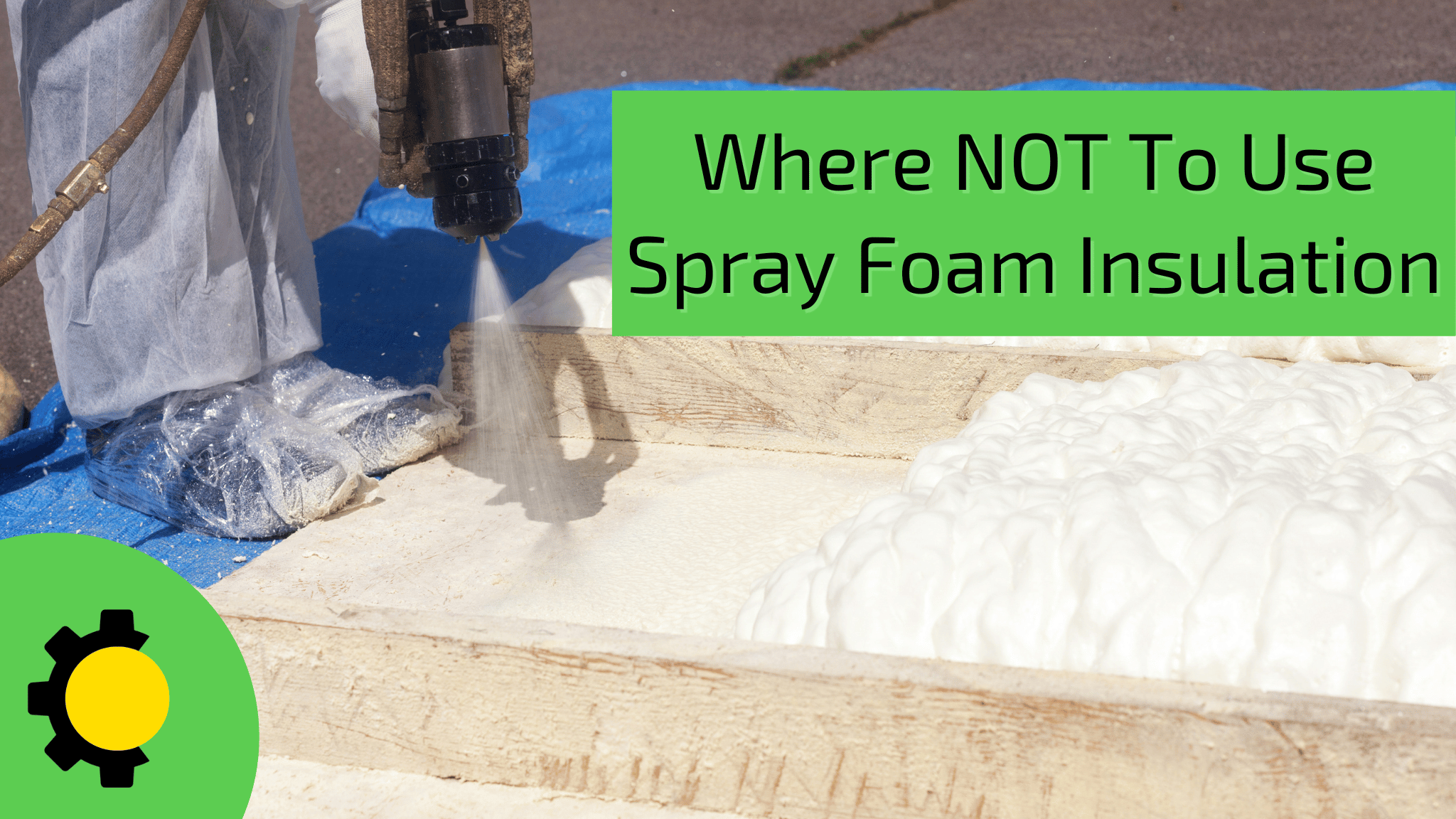Leading Applications of Spray Foam for Residential and Commercial Properties
Leading Applications of Spray Foam for Residential and Commercial Properties
Blog Article
Spray Foam: The Ultimate Solution for Air Sealing and Insulation
Spray foam insulation has actually arised as a leading option for efficient air sealing and thermal insulation, providing an unique mix of homes that set it apart from traditional methods. Recognizing the complete extent of its benefits, installation processes, and contrasts with other insulation types is crucial for making educated choices.
What Is Spray Foam?
Spray foam is a versatile insulation product that incorporates the principles of air sealing and thermal resistance to boost energy efficiency in structures. Composed primarily of polyurethane or various other similar compounds, spray foam is used as a liquid that increases upon contact with surfaces, producing a solid, constant layer of insulation. This special property allows it to fill up gaps, splits, and spaces that traditional insulation products may forget, supplying a remarkable air seal.
There are two primary types of spray foam: open-cell and closed-cell. Open-cell spray foam is lighter and extra flexible, supplying outstanding audio absorption and a lower R-value per inch - Spray Foam. In contrast, closed-cell spray foam is denser, supplying a greater R-value, wetness resistance, and included structural honesty to building elements
The application procedure normally involves specific tools, guaranteeing a seamless application that complies with various substratums, consisting of metal, wood, and concrete. This versatility makes spray foam appropriate for both brand-new constructions and retrofitting existing frameworks. Its capacity to create a closed obstacle dramatically adds to decreasing power intake and improving indoor air high quality, therefore making it a favored selection among property owners and building contractors alike.
Benefits of Spray Foam Insulation
One of one of the most significant advantages of spray foam insulation is its phenomenal ability to create a constant air obstacle, which effectively minimizes energy loss. Unlike conventional insulation materials, spray foam broadens to fill up fractures and spaces, making certain that air leak is drastically reduced. This characteristic not only enhances energy efficiency however additionally brings about decrease energy expenses gradually.
Furthermore, spray foam insulation supplies exceptional thermal resistance, adding to a more stable indoor setting. Its high R-value per inch permits efficient insulation in restricted spaces, making it perfect for attic rooms, walls, and crawl rooms. The moisture-resistant residential or commercial properties of spray foam aid stop mold and mildew development, promoting healthier living problems.
One more crucial advantage of spray foam insulation is its sound-dampening high qualities (Spray Foam). It efficiently reduces sound transmission between areas, producing a quieter and more comfy home environment. The resilience of spray foam also attracts attention, as it does not sag or resolve gradually, maintaining its efficiency throughout its life-span
Exactly How Spray Foam Functions
Comprehending how spray foam insulation works is essential for valuing its performance in air sealing and thermal resistance. Spray foam insulation consists of 2 primary parts: isocyanate and polyol resin. When these elements are combined, they undergo a chain reaction that causes the product to expand quickly, developing a dense foam that fills up voids, cavities, and fractures.
As the foam increases, it follows surface areas, developing a closed seal that dramatically decreases air infiltration. This particular makes spray foam insulation very effective at stopping drafts and wetness infiltration, which can bring about power loss and damages in time. Furthermore, the closed-cell variant of spray foam uses remarkable thermal resistance as a result of its rigid structure, efficiently decreasing warmth transfer.
The one-of-a-kind buildings of spray foam enable it to conform to uneven surfaces, making certain detailed coverage and a seamless barrier. Therefore, spray foam insulation not just improves energy effectiveness however likewise adds to improved interior air quality by lowering the buildup of toxins and allergens. Inevitably, recognizing the mechanics behind spray foam emphasizes its duty as a superior choice for insulation and air securing in both commercial and household applications.
Installation Process Review

Prior to installation, the area must be effectively cleaned up and prepped, ensuring that surface areas are without dampness, debris, and dirt. Due to the fact that pollutants can jeopardize bond and total performance, this step is crucial. As soon as the area is prepared, the application includes blending the 2 components of the spray foam, which expands upon get in touch with and fills voids successfully.
Trained professionals must carry out the setup, utilizing specific tools to guarantee consistent insurance coverage and optimal thickness. Security safety measures, consisting of wearing safety equipment and ensuring appropriate ventilation, are imperative during this process. After application, the foam usually remedies view it quickly, forming a solid obstacle that boosts energy effectiveness.
Comparing Spray Foam to Typical Insulation
When examining insulation options, spray foam insulation attracts attention in comparison to standard materials such as fiberglass and cellulose. One of the key benefits of spray foam is its remarkable air securing capacities. Unlike fiberglass and cellulose, which like it can permit air seepage, spray foam increases upon application, filling gaps and spaces to develop a closed seal. This results in boosted power efficiency, as less heated or cooled air gets away the home, resulting in reduced energy bills.
Additionally, spray foam supplies a higher R-value per inch than traditional insulation kinds, supplying more reliable thermal resistance in a thinner account. This particular is especially valuable precede with restricted dental caries depth. In addition, spray foam is immune to wetness and mold and mildew development, which can be a considerable interest in cellulose and fiberglass, particularly in humid environments.
However, spray foam insulation commonly carries a higher ahead of time price than its typical equivalents. Home owners have to weigh this first investment against long-lasting energy financial savings and efficiency advantages. Ultimately, while both insulation kinds serve their objective, spray foam becomes an advanced solution for modern-day insulation demands, especially in terms of air sealing and thermal performance.

Verdict
In summary, spray foam insulation stands for a highly efficient service for achieving ideal air securing and thermal resistance. Its special homes, including wetness resistance and noise dampening, make it ideal for different applications in both new buildings and retrofitting projects (Spray Foam). Although the initial prices might be higher compared to standard insulation materials, the long-term benefits, such as substantial power savings and improved interior air top quality, validate the financial investment and emphasize its value in modern-day building techniques.
Spray foam insulation has actually arised as a leading remedy for effective air securing and thermal insulation, using an one-of-a-kind combination of homes that establish have a peek here it apart from standard methods.Spray foam is a versatile insulation product that incorporates the concepts of air sealing and thermal resistance to enhance power efficiency in structures.When reviewing insulation choices, spray foam insulation stands out in contrast to conventional materials such as fiberglass and cellulose. Eventually, while both insulation kinds offer their function, spray foam emerges as a much more sophisticated service for contemporary insulation needs, particularly in terms of air sealing and thermal effectiveness.
In recap, spray foam insulation stands for a highly efficient solution for achieving optimal air sealing and thermal resistance.
Report this page